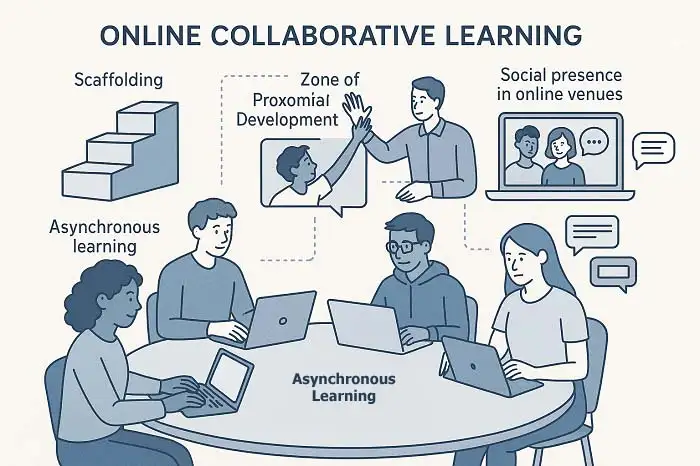IELTS Listening Practice Good Night's Sleep IELTS Listening Practice Good Night's Sleep About this activity This activity is labeled round table by Dr. Hariri, the creator and administrator of LELB Society. This activity is on the premise of Flipped Learning, according to which the students watch a video before the class, carry out research into the selected theme, and prepare themselves for an informed discussion in the class. This activity is on the basis of both synchronous and asynchronous computer-mediated communication (CMC), according to which the students are also encouraged to be active even before the class. In this flipped classroom activity, the students are encouraged to utilize the comment form at the bottom of the post to to exchange their questions, findings, ...
Home » Listening Practice in English » IELTS Listening Practice Good Night’s Sleep

IELTS Listening Practice Good Night’s Sleep
Updated: by Dr. Mohammad Hossein Hariri Asl
Time to Read: 5 minutes | 318 Views | 18 Comments on IELTS Listening Practice Good Night’s Sleep
Share This Post
About the Author
Dr. Mohammad Hossein Hariri Asl is an English and Persian instructor, educator, researcher, inventor, published author, blogger, SEO expert, website developer, entrepreneur, and the creator of LELB Society. He's got a PhD in TEFL (Teaching English as a Foreign Language).
Number of Posts: 4227



8. What are the meanings of the following verbs?
“drift off”, “slumber”
“Drift off” means to gradually fall asleep, often without intending to, as when you’re sitting in a cozy chair and your eyes slowly close. It’s often used to describe the gentle and gradual process of entering sleep.
“Slumber” is a more poetic and formal word for sleeping. It refers to a period of restful and peaceful sleep, often suggesting a deep and undisturbed state of rest.
7. Is REM responsible for procedural memory or declarative memory?
REM (Rapid Eye Movement) sleep is primarily responsible for consolidating procedural memory. Procedural memory involves the skills and tasks we learn, such as riding a bike, playing an instrument, or typing on a keyboard. During REM sleep, the brain processes and strengthens these motor skills and routines. While REM sleep plays a role in some aspects of declarative memory (which involves facts and events), it is particularly crucial for the consolidation of procedural memory, making it essential for learning new skills and retaining them.
6. When is the best time for going to bed after memorizing formulas and practicing skills?
The best time to go to bed after memorizing formulas and practicing skills is generally within a few hours, ensuring you get a good night’s sleep, particularly including REM sleep. Research suggests that sleep helps consolidate both declarative and procedural memories, making it crucial to rest adequately after intensive learning or practice sessions.
5. How effective the process of memorization in stressful moments is? Why?
Correction:
Your sentence is not constructed as a question.
Correct form: How effective is the process of memorization in stressful moments?
You are right. Thanks for your correction.
You’re most welcome.
4. What does REM stand for?
REM stands for Rapid Eye Movement. This stage of sleep is characterized by quick, random movements of the eyes, low muscle tone throughout the body, and the propensity for vivid dreams. REM sleep plays a critical role in brain function, including memory consolidation and processing emotional experiences.
3. What is the difference between declarative memory and procedural memory?
Declarative memory and procedural memory are two distinct types of long-term memory that serve different functions. Declarative memory, also known as explicit memory, involves the conscious recall of facts and events. It is subdivided into episodic memory (personal experiences and events) and semantic memory (general knowledge and facts). For example, remembering the capital of France or recalling your last birthday party both fall under declarative memory. Procedural memory, on the other hand, is a type of implicit memory that involves the unconscious recall of skills and tasks. It is responsible for knowing how to perform actions, such as riding a bike, playing a musical instrument, or typing on a keyboard. Unlike declarative memory, procedural memory is often acquired through repetition and practice, and it becomes automatic over time.
2. What did Herman Ebbinghaus demonstrate?
Hermann Ebbinghaus demonstrated the forgetting curve, which shows how information is lost over time when there is no attempt to retain it. He also discovered the spacing effect, which indicates that information is better retained when study sessions are spaced out over time rather than crammed in a single session. Ebbinghaus’s pioneering work laid the foundation for experimental psychology and our understanding of memory processes.
1. Does sleep influence memory?
Absolutely, sleep has a significant impact on memory. During sleep, especially during REM (Rapid Eye Movement) and deep sleep stages, the brain processes and consolidates information gathered throughout the day. This consolidation is crucial for transferring information from short-term to long-term memory. Lack of sleep can impair this process, leading to difficulties in learning new information and retaining memories.